As we saw in the
Parsing Constraints and Queries topic, the
OCL
Facade provides an API for parsing OCL expressions embedded in models as constraints.
The OCL specification defines a Complete OCL text document with which a UML (or Ecore) metamodel may be completed by providing many complementary constraints and expressions. In this case, the concrete syntax for context declarations indicates the context of constraints, equivalent to their placement in models.
As an example, consider the following Complete OCL document:
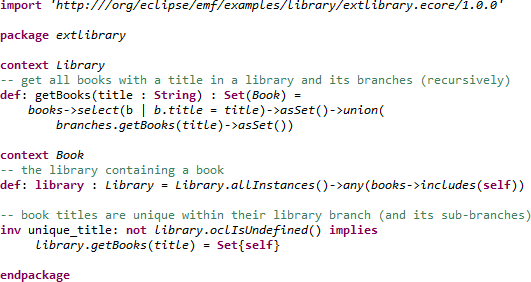
The Pivot binding provides a UML-aligned representation and so a Complete OCL document can be parsed to provide a similar Resource to that
derived from a UML or Ecore metamodel. A
Root contains a
Model which contains
Packages
and
Classes. The complementing Resource from the Complete OCL document is independent of the similarly structured
complemented Resource of the completed metamodel.
The Pivot binding uses an Xtext parser with a UML-aligned output. The input text is therefore specified by a URI and loaded by the Xtext parser to create a Concrete Syntax Resource. This may then be converted to the Pivot Abstract Syntax Resource. The Abstract Syntax Resource has a conventional Model, Package, Class, Operation hierarchy in order to provide a coherent composition context for the Constraints.
The elements of the independent complementing and complemented Resources are merged within
CompleteClasses and
CompletePackages of the
CompleteModel managed behind the OCL facade.
There are therefore two
Class objects named
Library, one for each Resource. The objects are distinct in so far as they belong to different resources, which can be separately serialized, and in so far as they may appear distinct to OCL expressions that use reflective access. However they are logically merged and the
CompleteEnvironment provides utility methods that allow the multiple objects to be accessed as a merged object.
The Ecore binding provided an
OCLInputclass to supervise the OCL source text, and the result of parsing the document was aList<Constraint>. p.
The Complete OCL document is a textual Resource with an associated text tooling. The
OCL facade provides
an API to load a Resource from a given
URI.
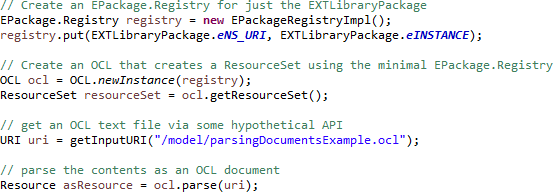
The parsed resurce can be traversed in the same way as other EMF resources.
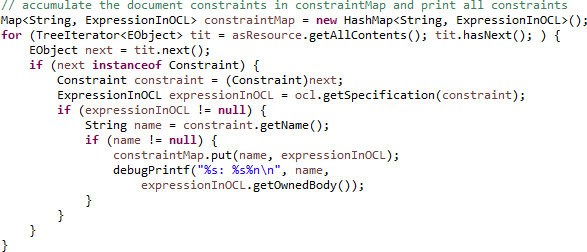
The contents of the Complete OCL document contribute to a
CompleteModel that merges all the contributions.
The contributions can therefore be used as if defined in a primary metamodel.
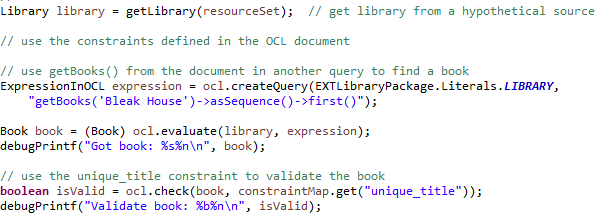
The standard EMF validation makes use of an
EValidatorRegistry that maps the URI of an
EPackage to the
derived
EValidator that provides the constraints appilcable to the
EPackage. If we want to exploit
additional constraints defined in a Complete OCL document, we must extend the underlying
EValidator.
The
ComposedValidator enables multiple
EValidator to be composed and to behave as a single
EValidator.
ComposedEValidator.install() replaces the single
EValidator by a composite
initially containing just the replaced
EValidator. A
CompleteOCLEObjectValidator provides the additional validation of the given
uri and
EPackage.
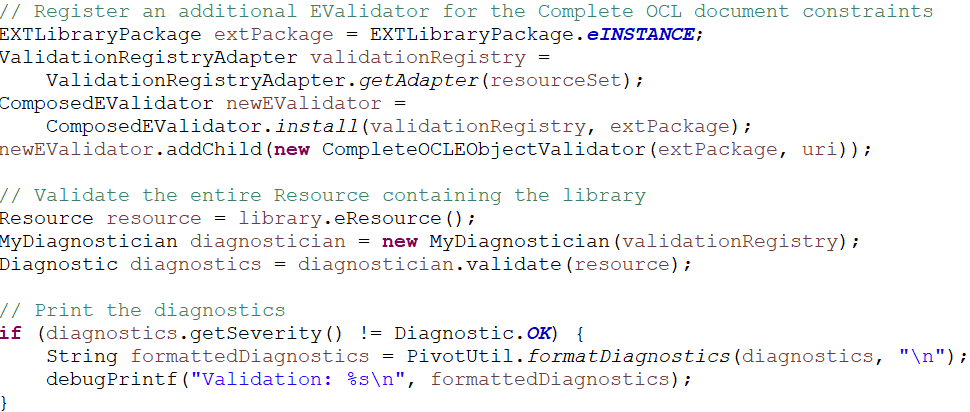
The standard
Diagnostician does not directly support validation of a
Resource.
MyDiagnostician remedies this deficiency and provides a
SubstitutionLabelProvider
that provides slightly better labels within OCL diagnostics.
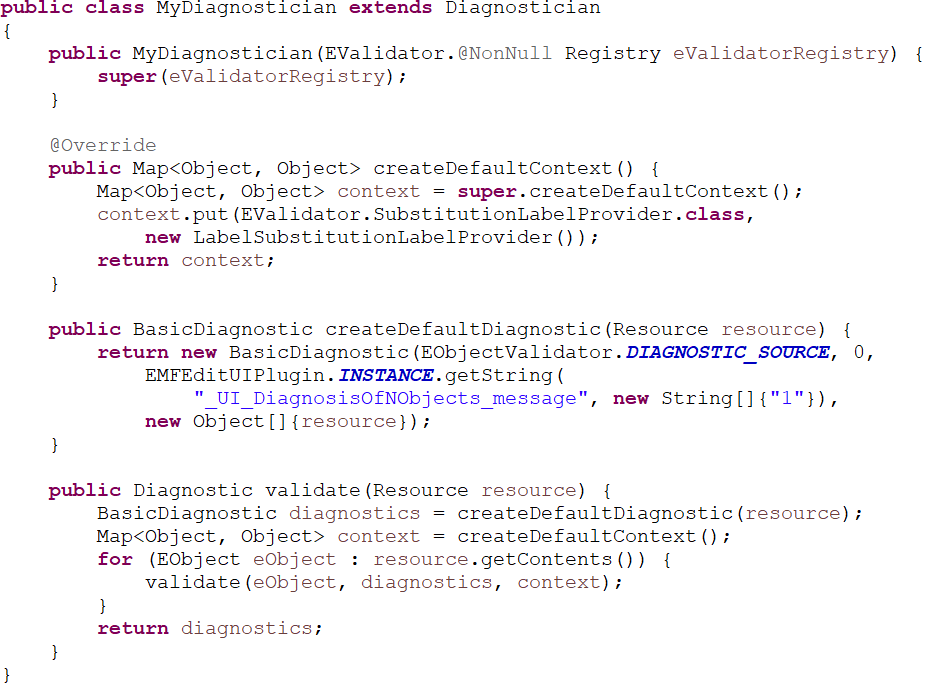
The source for these examples may be found in the org.eclipse.ocl.examples.xtext.tests plugin in model/parsingDocumentsExample.ocl and in src/org/eclipse/ocl/examples/test/xtext/PivotDocumentationExamples.java.